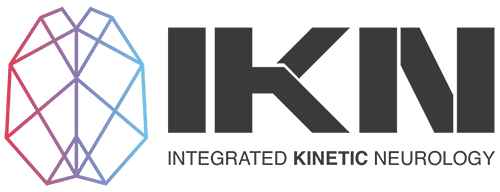
Are “Weak” and “Strong” Accurate Reflections of Movement Output?
Creating Robust Movement
Research Article Here
If you were a fly on the wall in most Physical Therapy and Rehab clinics, you would likely hear the terms “weak” and “strong” thrown around quite a bit. “Your glutes are too weak and that’s why your back hurts.” “Your shoulder pain won’t go away until we get your rotator cuff stronger.” That was us. But, are these terms accurate descriptions of how movement occurs in the real-world? Is it really that black and white? This is a scenario where we can often see therapists become too caught up in the OUTPUT. This is the movement or behavior that we are observing as a therapist. But, there is no motor OUTPUT without sensory INPUT.
All movement output is an ESTIMATION based on the quality of the input that you gather from your body and the external environment. Of course, we want our estimation to be as accurate as possible, but it never is. Our movement is never perfect, and no two movements are ever the same. Our goal as therapists, then, is to facilitate strategies to deliver better quality feedback or input to the clients movement system so that it can make better estimations. On top of that, we need to do it in a way that mimics the real world. In the real world, the best mover is not always the strongest. The best mover is the most adaptable. The best mover is the one that can move in the presence of uncertainty and stress. If you’ve checked out the video attached to this post, you can see our view of why it’s important to facilitate “good enough” movement.
From a rehabilitation/training perspective, this means facilitating cooperation between tissues, especially with task-based movement. It requires a movement approach that allows the client to tolerate different levels of load, and not just going from 0-100 quickly, building high levels of “strength.” It requires doing this in a manner that exploits more parts of an individual’s anatomy that reflects how that movement occurs in the real world. An example of this would be allowing a client to improve how force/load is transmitted from their hand proximally to their elbows, shoulders, and midline area. Our hands directly interact with our environment during task based movement. You don’t see many people picking up a coffee cup with their elbows or opening doors with their shoulders. This distal to proximal loading strategy is one of many we can use to improve upper limb pain and movement-related issues. But, it has to be facilitated in a manner that improves how multiple tissues and systems cooperate. It’s not just about strength. Strength is context dependent.
In the attached article, we can get a deeper insight into how real world movement can unfold in many ways, and so a sensorimotor approach that influences the cooperation of multiple structures and systems is required. While this may seem complex, at IKN we use a very simple model that identifies the sensorimotor capacity of the upper limb, lower limb, and midline, based on the clients present complaint. What qualities must the individuals express in these areas, and how can we link that to their specific complaints to improve their movement capacity outside of the clinic or gym. Using a simple model and a clear step by step process, we can facilitate much greater change in pain and movement by targeting the qualities that an individual needs to express for robust movement.
Assessment Tip
When assessing a client’s movement capabilities, we need to understand that what we are observing is the best their neuro-musculoskeletal system can express based on the quality of the INPUT their gathering from their body and environment. For example, if you are assessing shoulder range of motion and you see limitations in shoulder flexion, don’t jump straight into thinking that they need more strength in the shoulder flexors. Instead, shift your focus towards identifying the “sensory barriers.” Where do we need to deliver better quality sensory input so the brain doesn’t feel the need to express protection in the form of pain and movement restriction? Are other areas of the upper limb tolerating load well? Are the neural tissues of the upper limb tolerating load well? Are the muscular tissues of the upper limb able to tolerate load at different ranges (not just weak vs strong)? Is the rib cage tolerating load well in different movement directions? There’s so much information we can gather when we shift our focus towards what qualities are necessary to facilitate robust movement as opposed to chasing symptoms.

Great follow up to the instagram post yesterday. Thanks for sharing all this information.